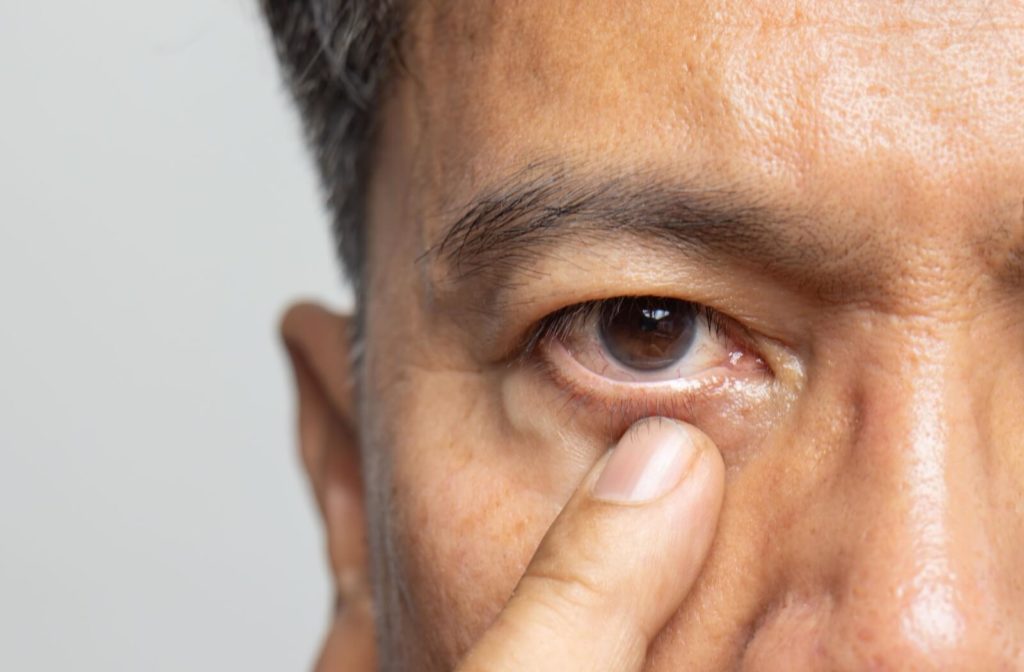Imagine looking through a foggy window. Everything looks blurry, colours are dulled, and it feels like a hazy veil covers your vision. For many individuals, this isn’t just an occasional inconvenience; it’s a daily occurrence caused by cataracts.
Cataracts are one of the most common eye conditions that naturally develop as we age. Most individuals will experience cataracts to some degree.
However, cataracts don’t affect everyone to the same extent. Many individuals can develop cataracts but won’t require medical intervention because their vision remains unaffected.
Cataracts can be surgically removed once the condition progresses and impacts visual clarity and our ability to complete daily tasks.
Understanding Cataracts
A cataract is a common eye condition that develops when the eye’s natural lens becomes cloudy, leading to distorted vision. It usually develops slowly and can affect one or both eyes.
The lens of our eye is responsible for focusing light directly on the retina, allowing us to see clearly. When proteins in our lens break down and clump together, light is scattered when it enters the eye, preventing light from focusing directly on the retina.
These clumps start out as small and gradually expand over time, covering the eye’s lens. As the cataract progresses without management, the lens can become entirely opaque, making it increasingly difficult to see.
Essentially, once cataracts develop, the process by which we see is disrupted, leading to blurry or distorted vision.
The cloudiness caused by cataracts forces our eyes to work harder, which can lead to headaches and eye fatigue. In severe cases, untreated cataracts can lead to inflammation, glaucoma, or even vision loss.
Cataracts start small and initially have only a minimal impact on vision. However, as they grow, individuals are more likely to notice several symptoms:
- Blurry or foggy vision
- Faded colours
- Increased sensitivity to light and glare
- Halos around lights
- Faded colours
- Difficulty seeing at night
- Frequent changes in prescription glasses or contact lenses
- Double vision
Risk Factors for Developing Cataracts
Most people around 80 years old will experience some cataract formation due to the eye’s natural aging process.
However, cataracts don’t necessarily affect everyone with the same severity. In fact, some individuals may develop cataracts but won’t require medical intervention because their vision isn’t significantly impaired. This is why routine eye exams are necessary to monitor eye health and catch any early signs of cataract development.
According to the Canadian Association of Optometrists, adults aged 65 and older are encouraged to have an annual exam once a year, as the risk of developing vision problems increases with age.
However, not every cataract develops due to aging. For example, congenital cataracts can occur in newborns and traumatic cataracts can develop after an eye injury. While their causes are different, they still impact vision in the same way as age-related cataracts.
While anyone can develop cataracts, additional factors can increase this likelihood:
- Genetics: A family history of cataracts can increase your risk.
- Medical conditions: Diabetes and hypertension are known to accelerate cataract development.
- Lifestyle choices: Smoking and excessive alcohol consumption can contribute to cataract formation.
- Environmental factors: Prolonged exposure to sunlight without adequate eye protection can increase risk.

Importance of Cataract Surgery
Despite cataracts’ impact on visual clarity and its associated complications, they can be successfully removed through cataract surgery. This surgery is generally done once the cataract has progressed to the point where it interferes with daily activities.
Your optometrist or ophthalmologist determines whether to undergo surgery once they’ve assessed the severity and progression of the cataracts. Without this procedure, the cataracts will continue to worsen, further impairing vision.
Cataract surgery involves removing the cloudy lens and replacing it with an artificial one called an intraocular lens (IOL). The IOL helps restore clear vision and can even correct any preexisting refractive errors such as nearsightedness or farsightedness.
Cataract surgery is one of the most common procedures individuals undergo. It’s safe and relatively quick with a high success rate. Most patients experience improved visual clarity and reduced reliance on glasses or contacts.
Cataract surgery is the only definitive solution for removing cataracts and the visual disruption they cause. Options like modifying prescription glasses or contacts only provide temporary relief during the early stages of cataract development. Adjusting corrective lenses doesn’t target the underlying cause of the cloudy growth over the eyes.
Schedule an Appointment
Most people are likely to develop cataracts, as this condition naturally develops as we age. Yet, the clouding of the eye’s natural lens won’t affect everyone to the same degree. Many individuals can continue to live comfortably without surgical intervention if their cataract remains relatively mild.
Visiting your eye doctor for routine eye exams helps detect early signs of cataracts and monitor its progression to discern when surgical intervention is necessary.
Connect with our team at Pinehouse Eyecare to schedule your next appointment.










